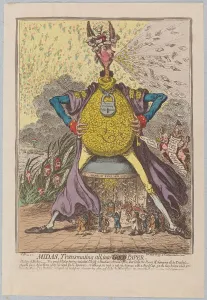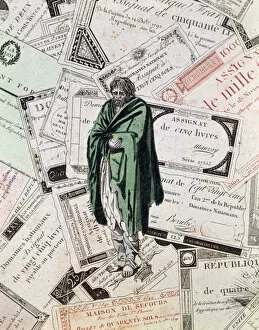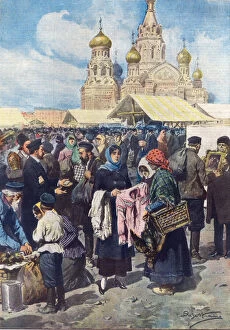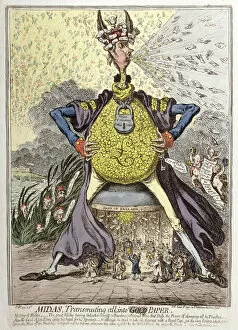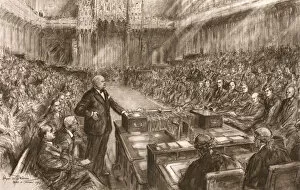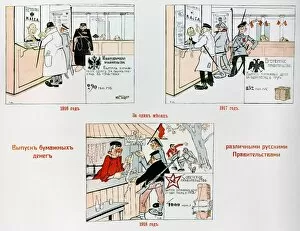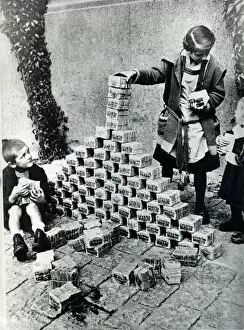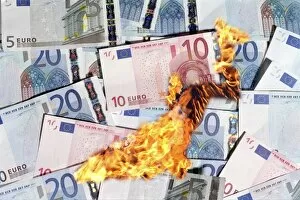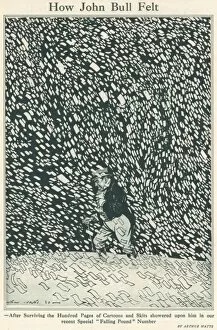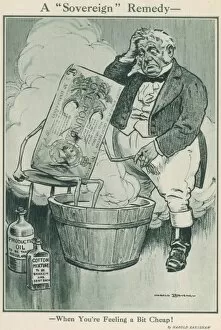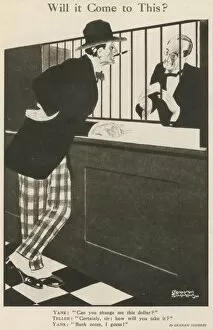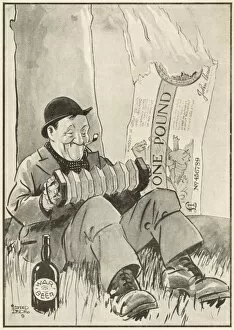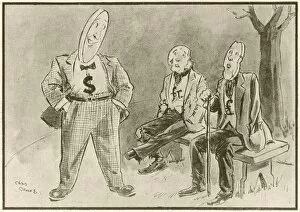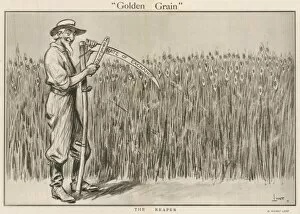Devaluation Collection
"From Midas to Banknotes: The Tale of Devaluation" In the enchanting world of mythology
For sale as Licensed Images
Choose your image, Select your licence and Download the media
"From Midas to Banknotes: The Tale of Devaluation" In the enchanting world of mythology, Midas possessed the extraordinary ability to transmute all he touched into shimmering gold. Fast forward to 1797, when Hannah Humphrey published an intriguing hand-coloured engraving titled "Midas Transmuting all into [Gold] Paper. " Little did she know that this artistic depiction would foreshadow a phenomenon that would plague economies for centuries to come. The year was 1796, and another artwork emerged - "A Man ruined by the depreciation of assignats. " This colour lithograph portrayed a man whose fortune had been decimated due to the devaluation of assignats. It marked one of the earliest instances where currency depreciation wreaked havoc on individuals' lives. Centuries later, in post-revolutionary Russia, bartering became commonplace after the collapse of their currency following the Russian Revolution. A stark reminder that even mighty nations could succumb to devaluation's devastating consequences. Fast forward again; we find ourselves amidst Germany's hyperinflation crisis in the early 1920s. Banknotes flooded society with increasing denominations like a five hundred mark banknote or even a twenty million mark banknote. These vividly coloured lithographs represented not wealth but rather an economy spiraling out of control. As if mocking stability further, additional banknotes were introduced - twenty and fifty million mark notes alongside a five million mark note from around 1923. Each piece served as tangible evidence of how rapidly value disintegrated under hyperinflation's grip. Amongst these chaotic times stood a ten thousand mark banknote from 1922 – its recto and verso showcasing vibrant colours yet concealing tales of economic ruin within its intricate design. Similarly haunting was a half-million-mark note from 1923; both reminders that prosperity can vanish as quickly as ink dries on paper. Not far behind, a five million and one million mark banknote from 1923 emerged.

